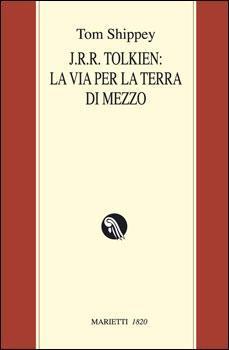What do you think?
Rate this book


545 pages, Paperback
First published January 1, 1982
χρόνος ανάγνωσης κριτικής: 36 δευτερόλεπτα
Ο φετινός Σεπτέμβρης ήταν ο μήνας που έκλεισαν 50 χρόνια
από τον θάνατο του Τόλκιν. Ήταν επίσης και ένας μεταβατικός
ας το πούμε μήνας για το πρότζεκτ Τόλκιν.
Αυτό διότι το συγκεκριμένο βιβλίο είναι το τελευταίο που ασχολείται
άμεσα και εκτενώς με τη Μέση-γη και τους μύθους της και το
τελευταίο που εκτείνεται πέρα των 400 σελίδων.
Οπότε ο υπόλοιπος Τόλκιν θα είναι κάτι διαφορετικό
και κάπως πιο ξεκούραστο.
Είναι γραμμένο από τον ακαδημαϊκό Τομ Σίπι και είναι μια
ακαδημαϊκού στυλ μελέτη στο πώς το στοιχείο της δουλειάς του Τόλκιν τον βοήθησε
να φτιάξει και να αναπτύξει την δική του μυθολογία πάνω σε όσα δίδασκε
στο Πανεπιστήμιο της Οξφόρδης (αγγλοσαξωνική γλώσσα, σκανδιναβική λογοτεχνία).
Ενδιαφέρον ανάγνωσμα ειδικά για τους λάτρεις του Τόλκιν αλλά
σε αρκετά σημεία πλατειάζει και επαναλαμβάνεται
και είναι αρκετά ακαδημαϊκό για τα γούστα μου και κάπως με ψιλοκούρασε.
Ίσως φταίει κι ο δίχρονος κορεσμός μου πάνω σε ό,τι
έχει σχέση (κυρίως) με την Πρώτη Εποχή της Μέσης-γης.
Αλλά σε γενικές γραμμές μου άρεσε.
"This is a deathbed strikingly devoid of the sacraments, of Extreme Unction, of 'the consolations of religion'. It is impossible to think of Aragorn as irretrievably damned for his ignorance of Christianity (though it is a view some have tried to foist on Beowulf). Still, he has not fulfilled the requirements for salvation either."(p. 202)